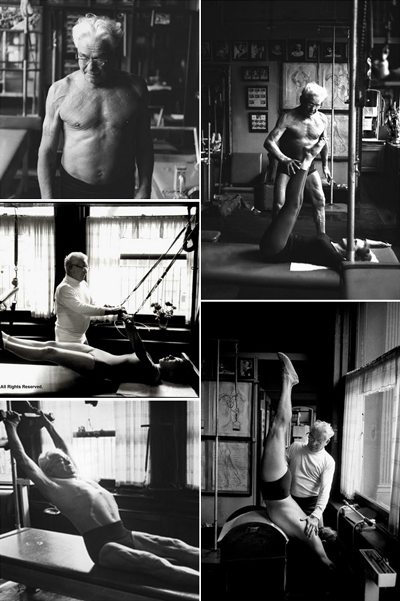The main benefits of Pilates are:
- Relieve back pain
- Improve your posture
- Strengthen your abs
- Get toned and more flexible
- Feel refreshed

Joseph Pilates
Joseph H. Pilates was born in 1883 in Mönchengladbach, Germany. His father was a prize-winning gymnast of Greek ancestry, and his mother worked as a naturopath. Pilates was a sickly child and suffered from asthma, rickets, and rheumatic fever, and he dedicated his entire life to improving his physical strength. Besides skiing frequently, he began studying body-building, yoga, "kung fu" (probably what is now known as qigong), and gymnastics. Pilates came to believe that the "modern" life-style, bad posture, and inefficient breathing lay at the roots of poor health. He ultimately devised a series of exercises and training-techniques and engineered all the equipment, specifications, and tuning required to teach his methods properly. In 1912 he moved to England.The British authorities interned him during World War I along with other German citizens in an internment camp. It was here that he began refining and teaching his minimal equipment system of mat exercises that later became "Contrology". After the war (WWI), he returned to Germany and collaborated with important experts in dance and physical exercise such as Rudolf Laban. In 1925 Pilates migrated to the United States. On the ship to America, he met his future wife Clara. The couple founded a studio in New York City. His method, related to encouraging the use of the mind to control muscles.
The six key benefits of Pilates
You'll rediscover your body's natural movement patterns and experience six key benefits.
- Proper alignment balances your skeleton so your muscles are held at their ideal length, without tension.
- Pilates strengthens the whole body, targeting each muscle group.
- Flexibility is essential for your overall fitness and vitality and Pilates is the perfect exercise regime to achieve this.
- After a few weeks of Pilates you should notice visible muscle tone and see your body begin to evolve.
- Pilates builds endurance within individual exercises and also within workouts.
- A sense of calm and well-being is encouraged by the relaxation of tense muscles during Pilates.
Pilates vs. GYROTONIC EXPANSION SYSTEM®
At first glance,

